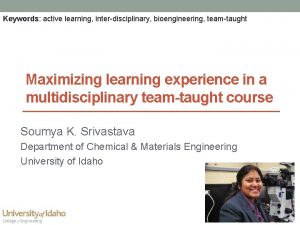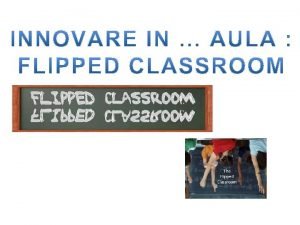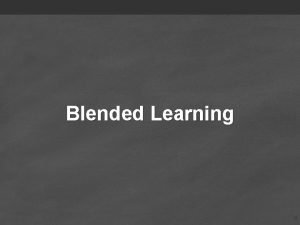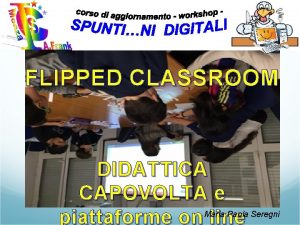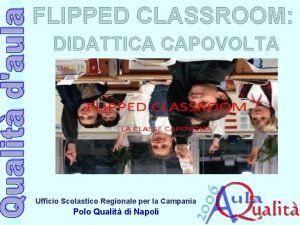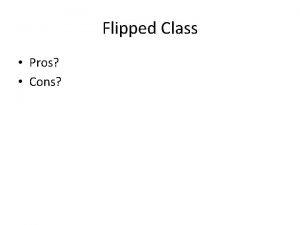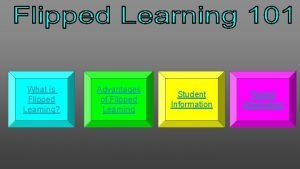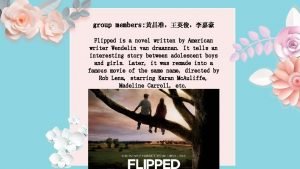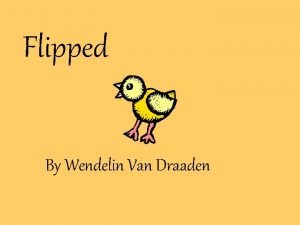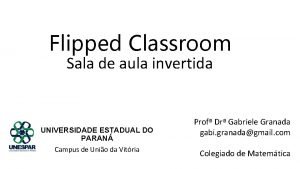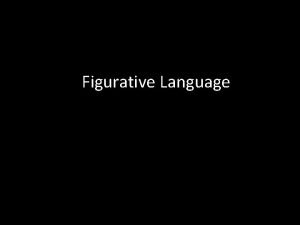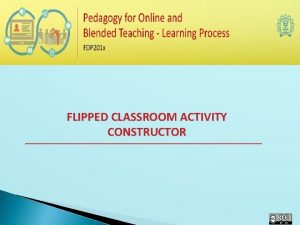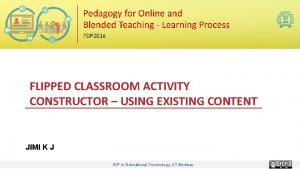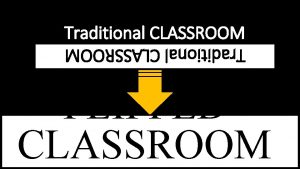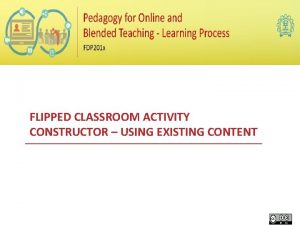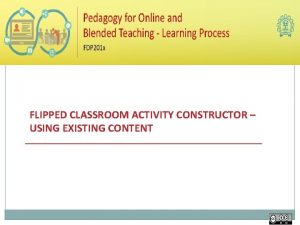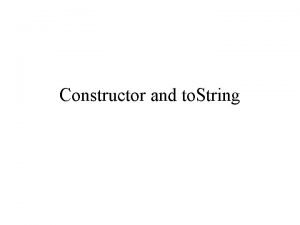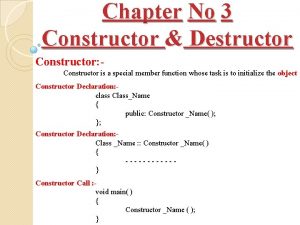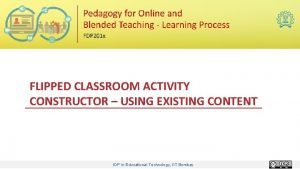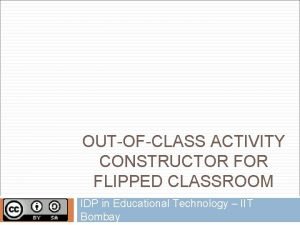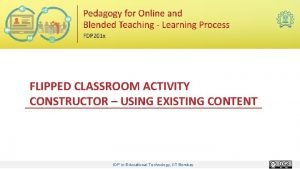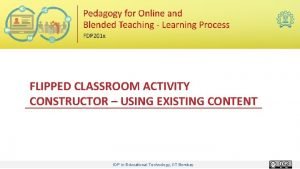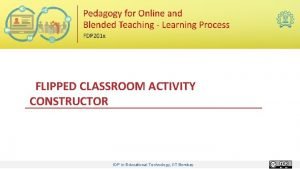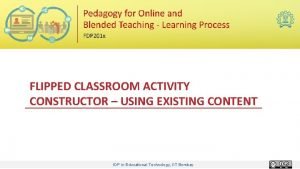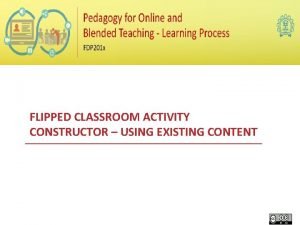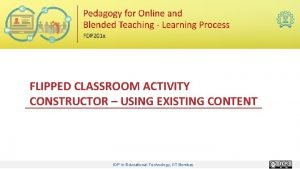FLIPPED CLASSROOM ACTIVITY CONSTRUCTOR JIMI K J JIMI


















- Slides: 18

FLIPPED CLASSROOM ACTIVITY CONSTRUCTOR JIMI K J

JIMI K J INTERFERENCE ENGINEERING PHYSICS PHYSIC S 1 SEM B. TECH STUDENTS IN CIVIL ENGINEERING APJ ABDUL KALAM TECHNOLOGICAL UNIVERSITY

Out-of-class Activity Design -1 Learning Objective(s) of Out-of-Class Activity At the end of watching the videos student should be able t o • Distinguish the dual nature of light(Understand Level) • Explain the principle of interference (Understand Level) • Solve problems related to interference (Apply Level) Key Concept(s) to be covered • Nature of light • Interference • Constructive and Destructive Interference

Out-of-class Activity Design - 2 License of Video CC-BY-SA (reuse allowed) Mapping Concept to Video Source DURATION (in min) CONCEPT VIDEO SEGMENT Nature of Light V 1 - 0: 00 – 2: 55 2. 55 Interference V 3 - 0: 00 – 2: 03 2. 03 V 5 - 0: 00 – 5: 49 5. 49 Constructive and Destructive Interference TOTAL DURATION 10. 07 min

Out-of-class Activity Design - 2 Main Video Source URL VIDEO SEGMENT DURAT ION (in min) V 1 - 0: 00 – 2: 55 2. 55 V 2 - 0: 00 – 2: 03 V 3 – 0: 00 – 5: 49 2. 03 5. 49 URL https: //drive. google. com/file/d/0 B 6 YRq 6 m_Vs 84 Z 0 Fn. Tzh. OTm. Yt. Uj. Q/view? usp=s haring https: //drive. google. com/file/d/0 B 6 YRq 6 m_Vs 84 d. ERBWDJf. Vm. U 2 Yk. U/view? usp =sharing https: //drive. google. com/file/d/0 B 6 YRq 6 m_Vs 84 Nlh. WRl. JCQk. FPOXM/view? usp= sharing

Out-of-class Activity Design - 3 Aligning Assessment with Learning Objective Distinguis h the dual nature of light Assessment Strategy Expected Duration (in min) Additional Instructions (if any) Q. 1) What is the relation connecting velocity, frequency and Watch V 1 and wavelength 5 minutes then answer Q. 2) Who proposed the particle Q 1 and Q 2 nature of light

Out-of-class Activity Design - 3 Aligning Assessment with Learning Objective Explain the principle of interferenc e Assessment Strategy Q. 1) What is superposition principle? Q. 2) Give one example of interference? Expected Duration (in min) Additional Instructions (if any) 10 minutes Watch V 2 and then answer Q 1 and Q 2

Out-of-class Activity Design - 3 Aligning Assessment with Learning Objective Solve problems related to interference Assessment Strategy Expected Duration (in min) Q 1) A double slit of 0. 5 mm separation is illuminated by light of blue cadmium line. How far behind the slits must one go to obtain fringes that are 0. 1 cm apart? The wavelength of the blue cadmium 10 light is 4800Å. minutes Total activity duration 25 minutes Additional Instructions (if any) Watch V 3 and then answer Q 1 Submit answers to all questions 3 hours before coming to class. This will be considered for your attendance. Five mark is awarded for the students submitting the assignment on time

In-class Activity Design -1 Learning Objective(s) of In-Class Activity At the end of the class, students will be able to, • • Solve real-life problems using the conditions of interference(ANALYZE Level) Implement idea of interference in all real life experience. (ANALYZE Level) Key Concept(s) to be covered § Use of Expressions in Problem Solving. § Implementation of the concept of interference.

In-class Activity Design -2 Active Learning activity that you plan to do Real world problem solving using. § Think-Pair-Share Concept clarification using. § Peer Instruction

In-class Activity Design -2 Peer Instruction Strategy – What Teacher Does Pose the two PI questions at the start of the class and provide summary of interference and formation of interference pattern Q 1: Who proposed the wave nature of light? Newton Maxwell Huygen Max Plank

In-class Activity Design -2 Peer Instruction Strategy – What Teacher Does Q 2: For destructive interference, path difference is odd number of half wavelengths even number of half wavelengths whole number of wavelengths even whole number of wavelengths

In-class Activity Design -2 Peer Instruction Strategy – What Student Does § For each question they will first vote individually. § Then they will discuss with peers and come to consensus. § Listen to instructors explanation.

In-class Activity Design -2 TPS Strategy – What Instructor does Two straight and parallel slits 0. 6 mm apart are illuminated by a monochromatic light of wavelength 6000Å. Calculate width of the fringes obtained on a screen placed at a distance of 60 cm from slit.

In-class Activity Design -2 TPS Strategy – What Instructor does Think (~2 minutes) Instruction: Think individually and identify the equation of interference and find out width of the fringes.

In-class Activity Design -2 TPS Strategy – What Instructor does Pair (~5 minutes) Instruction: Now pair up and compare your answers. Agree on one final answer. While students are pairing and discussing, instructor goes to 2~3 sections to see what they are doing. Now with relevant theory, discuss the formation of interference pattern.

In-class Activity Design -2 TPS Strategy – What Instructor does Share (~8 minutes) Instructor asks a group to share their answer with class and see whethere are different answers. After sharing is done, instructor gives feedback on the correct solution and how interference pattern is formed.

In-class Activity Design -2 Justify why the above is an active learning strategy In both the above strategies, students are required to go beyond mere listening and execution of prescribed steps. They are required to think deeply about the content they were familiarized in out-of-class and do higher order thinking. There is also feedback provided (either through peer discussion or instructor summary)
 Bioengineering flipped classroom
Bioengineering flipped classroom Venitemi dietro con l'occhio
Venitemi dietro con l'occhio Flipped classroom
Flipped classroom Beal moodle
Beal moodle Flipped classroom model
Flipped classroom model Cosa prevede “inquiry flipped classroom”:
Cosa prevede “inquiry flipped classroom”: Didattica capovolta
Didattica capovolta Flipped classroom pros and cons
Flipped classroom pros and cons Flipped classroom advantages and disadvantages
Flipped classroom advantages and disadvantages Kaitlin collins hot
Kaitlin collins hot Sylvester stallone michael jackson
Sylvester stallone michael jackson Coker incision
Coker incision Sourima mal
Sourima mal Flipped sum of its parts
Flipped sum of its parts Flipped book setting
Flipped book setting Classroom
Classroom Language
Language Flipped advising
Flipped advising Flipped
Flipped
